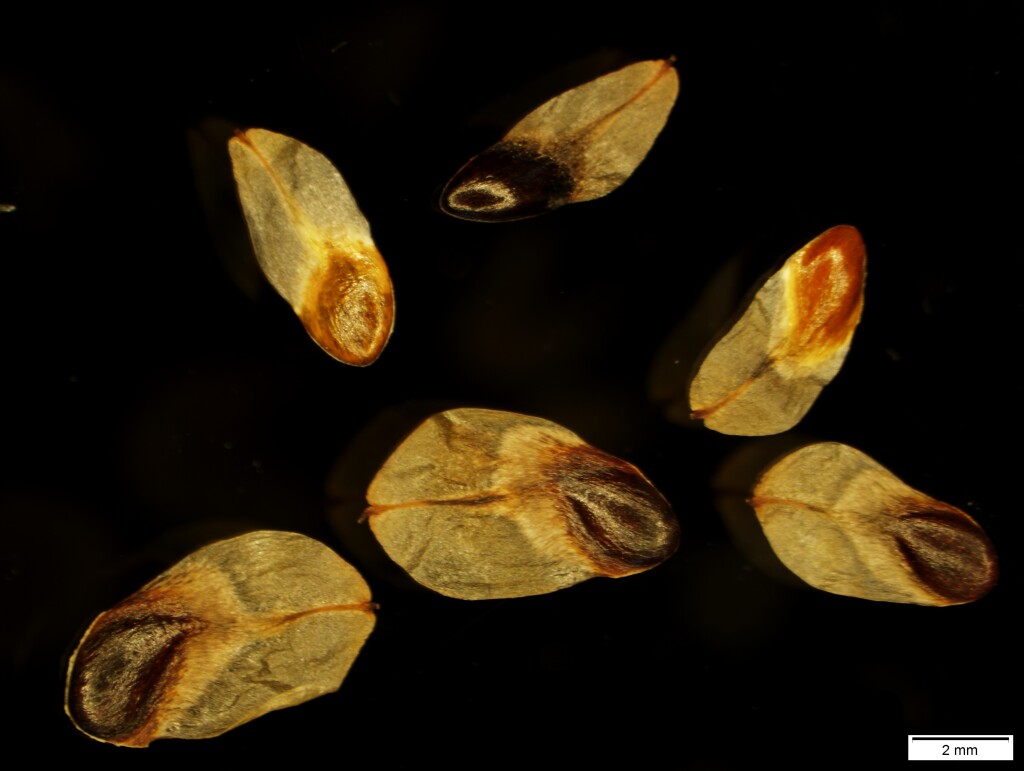Allocasuarina media
L.A.S.JohnsonDioecious or rarely monoecious shrub 1–3 m high; penultimate branchlets woody. Bark smooth. Branchlets ascending, to 20 cm long; internodes 5–12 mm long, 0.5–0.8 mm diam., smooth, mostly glabrous in furrows; ribs angular or rounded. Teeth 6–8, erect or slightly spreading, c. 0.5 mm long, not overlapping, not withered. Male spikes often moniliform, 10–45 mm long, 5–7 whorls per cm; anther 0.5–1 mm long; bracteoles persistent. Cones cylindric, longer than broad, sessile or on peduncle to 15 mm long; cone body 14–27(–45) mm long, 8–15 mm diam.; valves in several rows, hardly extending beyond cone body, broadly acute to obtuse, thick pyramidal protuberance shorter than bracteole body. Winged seeds 5–8 mm long, very dark red-brown to black. Flowers Mar., Dec.
GipP, WPro, HSF. Known from low woodland on sand at the northern end of Wilsons Promontory as well as from a single collection in the Gembrook area.
Probably a well-established, self-reproducing hybrid between Allocasuarina littoralis and A. paradoxa. It differs from A. littoralis in being a smooth-barked shrub, with branchlets usually with glabrous furrows, male spikes often moniliform and cones on generally shorter peduncles. Compared with A. paradoxa, it often has more slender branchlets with erect to only slightly spreading teeth, which are more slender and often shorter than in A. paradoxa and are not withered (Wilson & Johnson 1989). Other records currently included in A. littoralis may be referable to this taxon, but further information is required.
Entwisle, T.J. (1996). Casuarinaceae. In: Walsh, N.G.; Entwisle, T.J., Flora of Victoria Vol. 3, Dicotyledons Winteraceae to Myrtaceae, pp. 90–101. Inkata Press, Melbourne.
 Spinning
Spinning
